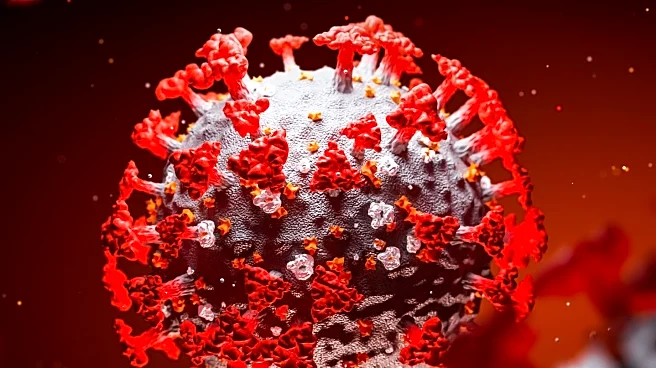What is the story about?
What's Happening?
A study published in Nature has identified PPP2R1A mutations as potential biomarkers for improved survival in patients with ovarian clear cell carcinoma (OCCC) undergoing immune checkpoint blockade (ICB) therapy. The research, led by Dai et al., utilized serial tumor biopsies from a trial involving anti-PD-1 and anti-CTLA4 treatments. The study found that inactivating mutations in the protein phosphatase 2A scaffolding subunit could predict dual ICB response and enhance anti-tumor immunity. This discovery could lead to precision immunotherapy for OCCC, a subtype with poor prognosis even when diagnosed early.
Why It's Important?
The identification of PPP2R1A mutations as biomarkers is significant as it addresses the challenge of predicting therapeutic response and resistance in ICB therapy. Ovarian cancer is a major health concern, ranking third in incidence and second in mortality among gynecological cancers globally. The findings offer hope for better treatment strategies for recurrent ovarian cancers, particularly the OCCC subtype. By understanding tumor-intrinsic factors that determine ICB response, the study paves the way for more personalized and effective cancer treatments.
What's Next?
Future research is needed to explore the prognostic value of PPP2R1A mutations in larger studies and develop selective inhibitors. The study suggests a need to investigate the molecular linkage between PPP2R1A mutations and IFN-γ signaling in the context of ICB therapy. Additionally, the role of immune cell compartments in therapeutic modulation should be examined. The findings could lead to new treatment options for other gynecological malignancies where PPP2R1A is frequently mutated.
Beyond the Headlines
The study highlights the emerging link between Ser/Thr protein phosphatases and cancer immunity, suggesting that cancer-specific contexts may determine the pro- or anti-tumor effects. The research underscores the importance of understanding the mechanisms through which genetic changes convert the tumor microenvironment into an inflammatory niche, potentially leading to synergistic anti-tumor effects with immunotherapy.
AI Generated Content
Do you find this article useful?













